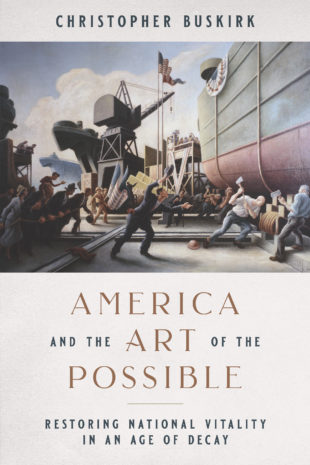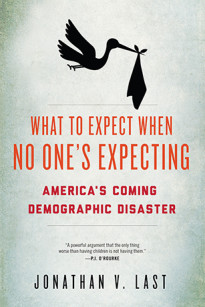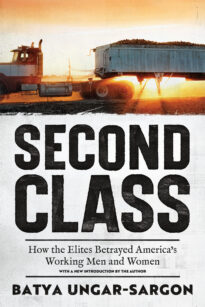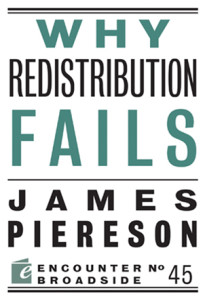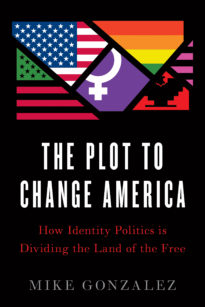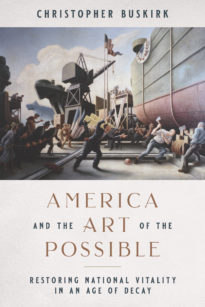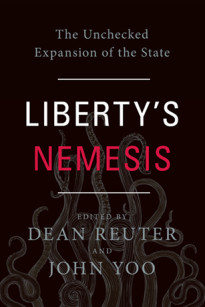What happens when progress stops? That’s an important question in a country whose self-understanding is deeply tied to the idea of progress—material, technological, political, and social. America’s first three centuries were characterized by physically pushing our border across the continent, west to the Pacific and then across nearly 2,500 miles of open ocean. It would not have been obvious to early Americans that Hawaii, a tropical archipelago far away from the California coast, would become the nation’s fiftieth state, joined in a political union with the far distant original states facing the Atlantic. At the same time the country was expanding in size, rapid progress was made in many other areas: science and technology extended the average life span, elevated living standards, and promoted social mobility and broad-based prosperity. Americans have come to expect the upward movement to continue: GDP will keep rising and science will make us healthier and wealthier, while political and cultural movements will make us better, happier people.
But progress has slowed or stalled or even reversed on various fronts in recent decades. Technology is still advancing, but primarily in the digital world. People get married later and have fewer children; life span stopped increasing and has actually declined in the past several years, even before the onset of Covid-19. It now takes two incomes to support a family of four in the middle class, whereas one income was sufficient as recently as the 1980s. Self-reported levels of happiness have dropped. Social trust is diminishing and the social consensus is badly frayed. Distrust of gatekeepers is widespread. The institutions responsible for protecting and advancing the interests of the nation—political, cultural, academic—have failed in their core mission and have become self-interested to the point of being sociopathic. In short, America has not been moving in an upward trajectory.
The uncomfortable fact is that civilizational progress doesn’t happen by a law of nature and is not guaranteed to continue indefinitely. Civilizations can rise, achieve greatness, and then fade, leaving behind evidence of impressive ingenuity. For example, the Antikythera mechanism, made two thousand years ago, has been described as the first analogue computer. It’s a sophisticated device for astronomical calculation found in fragmentary form near the Greek island after which it is named. The Lycurgus cup, a Roman glass goblet from the fourth century, long mystified viewers with the way it changes color from pale, opaque green to bright, translucent red when it is lit from behind. The secret was revealed by electron microscopy in 1990, showing nanoparticles of silver and gold in the glass. The effect was reproduced first by traditional glassmakers and then with a 3D printer by Dutch researchers who published their method in 2019.
To the modern mind, it is disorienting to realize that earlier civilizations could have been just as prosperous, secure, and happy as our own and perhaps more so. But the trajectory of civilization is not constantly upward. Decline and decay are just as possible as progress. In fact, decay is the default: it’s what happens when you just do nothing. Samuel Huntington argued that every nation is in either a state of development or decline. This follows the classic understanding of national cycles. I would offer a modification that gets to the heart of the matter: there is an invisible force that drives development, which I call vitality.
The vitality of a nation can be judged in two ways: by the private life of its people and by the public life of the nation. In the private sphere, a nation is successful if the people are physically secure in their lives and their property; if families are being formed and are free, generally prosperous, and self-sustaining; and if those families produce at least enough children to maintain a stable population. That sounds simple, because it describes the basic conditions for personal independence, physical security, social continuity, and a general sense of well-being. Add to this a broadly accepted worldview supported by religious piety and practice and one has the conditions for a vital civilization. Rome and Athens had this. America used to have it too.
In the public sphere, civilizational vitality is shown in a capacity for collective action, which is rooted in what the fourteenth-century Arab philosopher Ibn Khaldun called asabiyya. This concept can be understood as social cohesion, national or civilizational purpose, a feeling of being in it together and for the same reasons. When asabiyya is high, societies are not just secure, they grow prosperous because high social trust supports complex trade relationships along with specialization and division of labor, allowing capacity for innovation and the production of luxury goods. Low-trust societies, in contrast, tend to have less specialization.
Just as personal vitality grows from a strong sense of identity and purpose, civilizational vitality springs from a shared identity that unites people, legitimizes the state and explains its place in the world, and inspires great societal achievements. America has undertaken big projects in the past, from taming the frontier to the early space program, but our ability to accomplish great things as a nation has waned in recent decades. One reason is a fading sense of national identity and purpose.
America’s national identity was shaped in large part by the frontier and the long push westward across a continent. When the frontier closed, that aspect of the American character was set, and the nation’s restless energy then went out into a global project—which has now largely run its course. Will the engine that propelled this country simply burn out? The past few decades in America have been characterized by five major themes: globalization, financialization of the economy, science and tech stagnation (despite advances in digital technology), managerialism, and risk aversion.
The development of those themes has brought us to a crossroads.
Numerous indicators of societal health have been trending downward, often reinforcing each other. Some trends owe to factors outside our control, others resulted in part from earlier decisions that were made in good faith and would understandably have seemed right to most smart, informed, well-intentioned people at the time. Now it’s time to reckon with those errors and correct our course. There are actions we can take that will make a difference—not silver bullets, but steps in the right direction to change our trajectory and provide a foundation for a better future.
